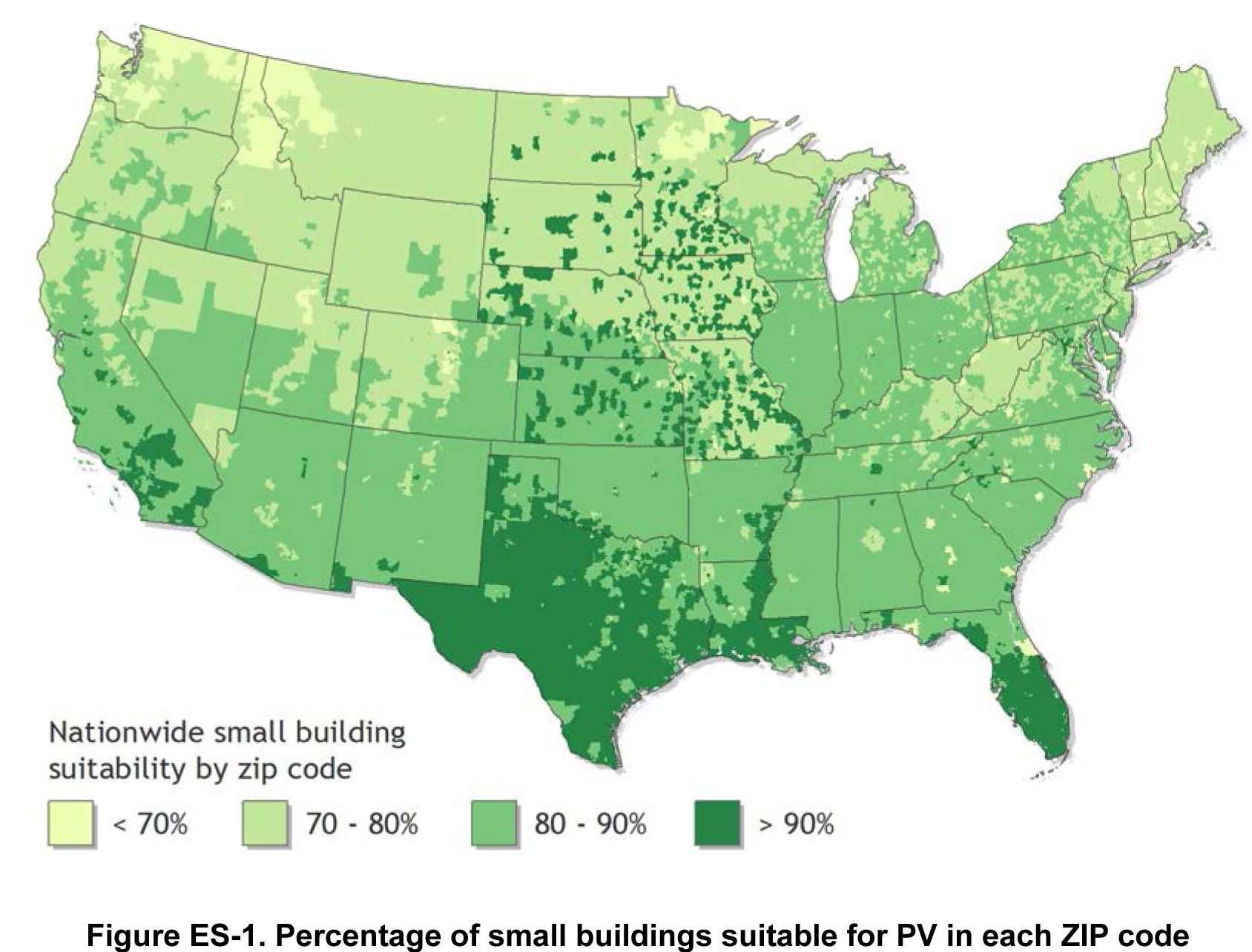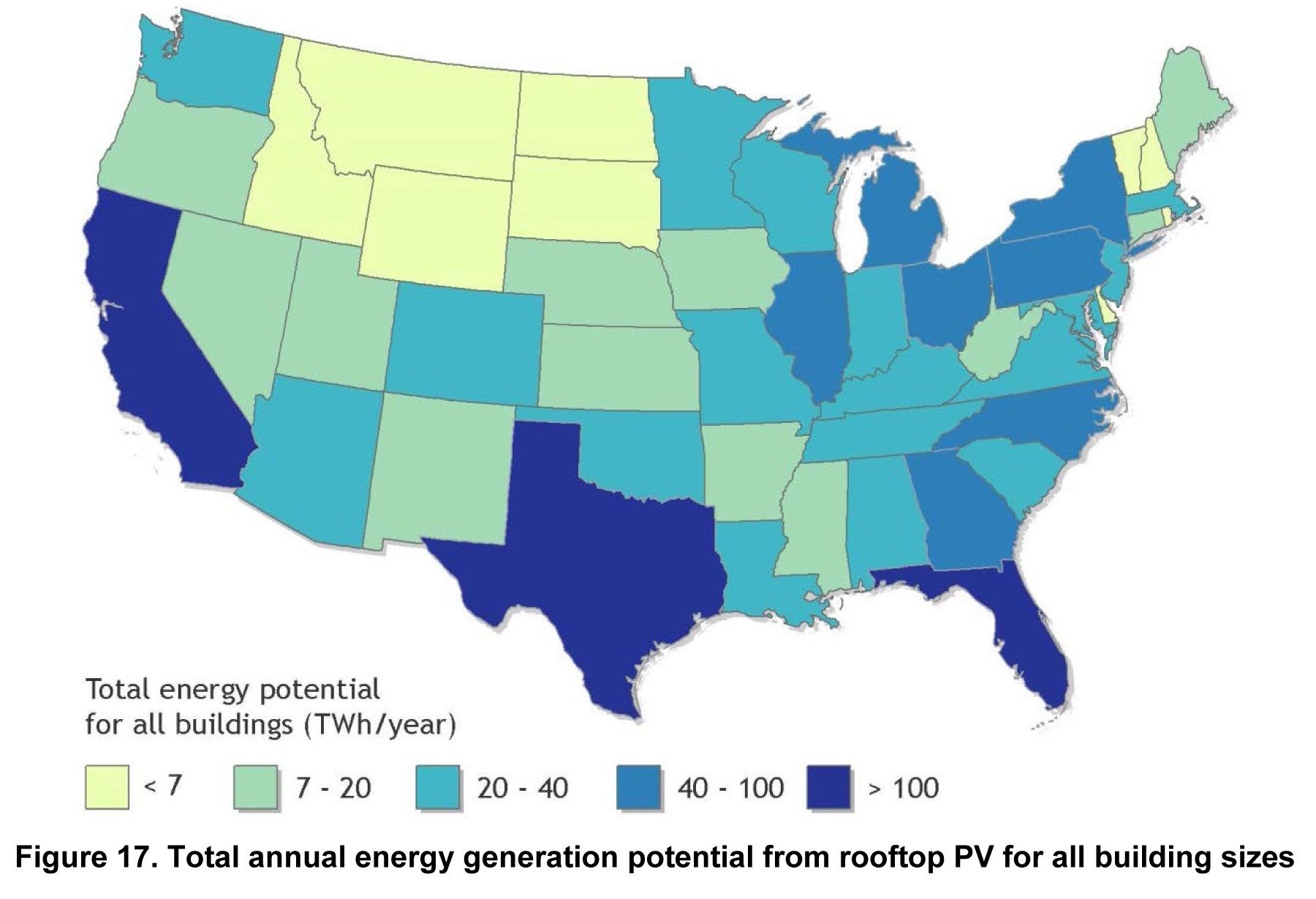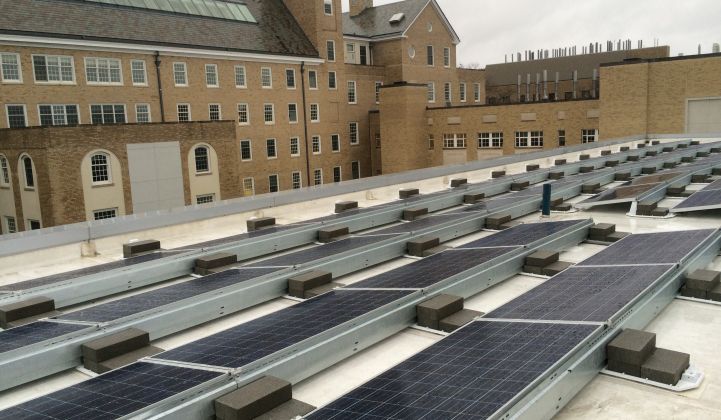The National Renewable Energy Laboratory has found that nearly 40 percent of electricity in the U.S. could come from rooftop solar photovoltaics, according to a new study.
The total figure, 1,118 gigawatts, is nearly double the previous estimate of 664 gigawatts that NREL calculated in 2008. The increase is due mostly to increasing module power density, more granular data and a better grasp of building suitability for solar.
"This report is the culmination of a three-year research effort and represents a significant advancement in our understanding of the potential for rooftop PV to contribute to meeting U.S. electricity demand," Robert Margolis, NREL senior energy analyst and co-author of the report, said in a statement.
NREL brought together ZIP-code-level data with rooftop suitability characteristics, including light detection and ranging (lidar) data and technical generation potential, to model the rooftop PV capacity of 128 cities. Those cities represent about one-quarter of the building stock in the U.S. and 40 percent of the population. NREL then ran two models, one for small buildings under 5,000 square feet and another for medium-size and larger buildings.

When it came to cities with the highest potential for rooftop PV to meet estimated city consumption, California unsurprisingly topped the list, with Mission Viejo, Calif. having a solar potential rating of 88 percent. But just behind Mission Viejo was Concord, New Hampshire at 72 percent, and Buffalo, New York wasn’t far behind at 68 percent. Although only about one-quarter of the rooftop area on small buildings was suitable for solar PV in the U.S., that still equated to more than 900 terawatt-hours per year of energy.
A key factor determining a state’s overall potential for solar PV to offset electricity generation was the per-capita energy consumption. The top six states, NREL noted, all have significantly below-average levels of household energy consumption. For any state that wants to make the most of solar incentives, energy efficiency should also be a top priority.
When it came to larger buildings, many were suitable for solar, but the flat roofs typical among these types of structures mean that the space cannot be used as efficiently as it can on tilted roofs, which are more common on homes and small buildings. But that could change, NREL noted, as racking and module-packing techniques are improving the usability of flat roofs.
Other technical advancements, such as module performance, could also push the estimates higher. NREL assumed a module efficiency of about 16 percent. If that rose closer to 20 percent, each technical potential estimate would rise by about 25 percent.
By taking all suitable buildings into account, California again came out on top, with a potential for 74 percent of electricity sales that could be powered by rooftop solar, according to the NREL model. Many New England states, despite their lower solar resources, could generate nearly half of electricity used from rooftop solar.

Of course, a significant penetration of rooftop solar in any single region can only come about if other investments are made. “In practice, the integration of a significant quantity of rooftop PV into the national portfolio of generation capacity would require a flexible grid, supporting infrastructure, and a suite of enabling technologies,” NREL concludes.
The report only looked at rooftops, leaving out other suitable solar PV placement, from ground-mounted systems to carports. “It is important to note that this report only estimates the potential from existing, suitable rooftops, and does not consider the immense potential of ground-mounted PV," said Margolis.
NREL hopes this latest set of data will be used by utilities, cities, researchers and the solar power market to better site rooftop PV systems.



